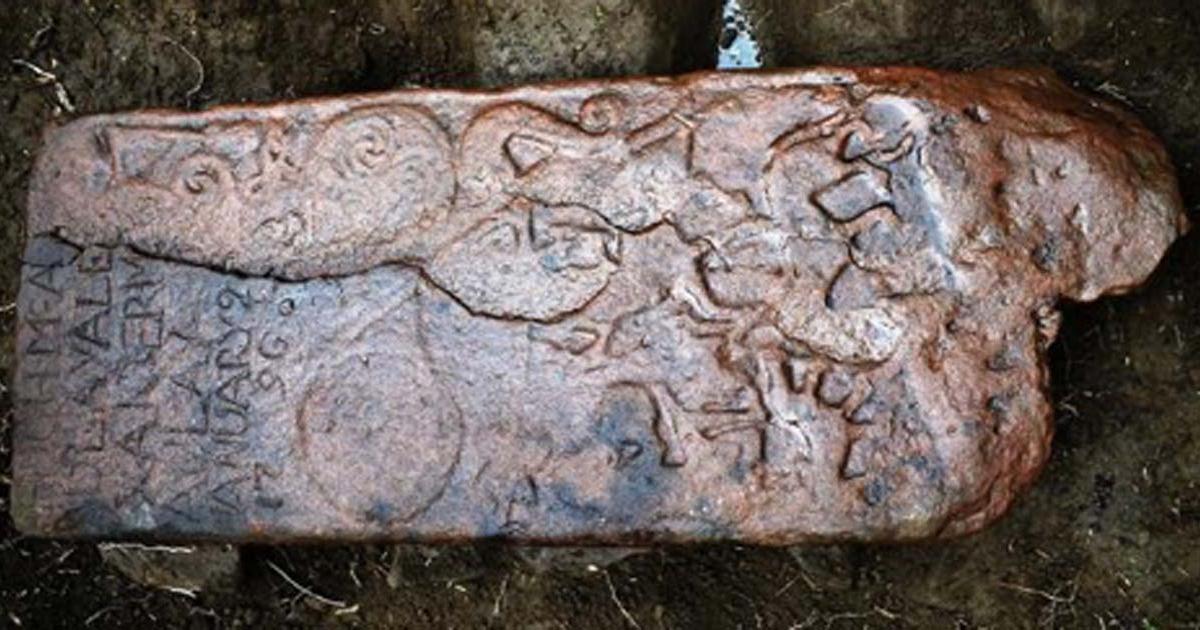
‘Once-in-a-Lifetime’ Pictish Stone Discovered In Scotland
The rare discovery of a Pictish symbol stone has been uncovered deep in the Scottish Highlands, and it is truly marvelous.
1,200 years old and originally standing more than two meters (6.56 ft.) high, an ancient monolith, a spiritual monument, was found decorated with a spread of classic Pictish symbols. Experts are rightfully declaring this find as being of ‘national importance'.
Putting the discovery in context, for Scottish archaeology and national culture, this is like when the Ministry of Antiquities in Egypt announce the discovery of a tomb.
- Signed, Sealed and Delivered: ‘Savage’ Pictish Warriors of Scottish Highlands Had Written Language
- Striking Pictish Dragon Carving Discovered During Storms in Orkney
- Scottish Fisherman Discovers a “Stunning” Pictish Symbol Stone on Riverbank
The Pictish Stone Discovery
Found situated within the grounds of an early Christian church in Dingwall, on the north east coast of Scotland, Anne MacInnes from the North of Scotland Archaeological Society first identified the stone while surveying the church yard.
An article in the Scottish Herald quotes MacInnes who said that when she was clearing vegetation and spotted the carving, “I really couldn't believe what I was seeing.” A team of archaeologists from Highland Council and Historic Environment Scotland quickly confirmed the find and noted that it had been broken and reused as a grave marker in the 1790s, before they removed it on Thursday.

Specialist conservators excavated the Pictish stone. (NOSAS)
Symbols on the Pictish Stone
The Picts were a tribal confederation who dominated north eastern Scotland during the Late Iron Age and Early Medieval periods, between the 6th and 8th Centuries AD. Class I Pictish symbol stones, like this newly discovered one, were created between 6th to 8th Centuries AD and display a range of symbols including on this example, “several mythical beasts, oxen, an animal-headed warrior with sword and shield, and a double disc and z rod symbol.”
According to a report on BBC, it is expected that the reverse side is “likely to include a large ornate Christian cross.” Only about 50 of these rare Pictish cross-slabs are known to exist, and John Borland, president of the Pictish Arts Society, told reporters that the location of the find, an early Christian site in Easter Ross, “is a new location for such sculpture so adds significant information to our knowledge of the Pictish church and its distribution.”

Measured drawing by John Borland of the designs on the stone. (HES)
These stones are found from Shetland in the north to the Firth of Forth in the south, and their symbols are believed to have represented the names of individuals or groups and they may have been territorial boundary markers. Highland Council archaeologist Kirsty Cameron thinks this is “a once-in-a-lifetime" find and indicates that that the site itself must be much older than anyone ever expected.”
Lots of a “Once-in-a-Lifetimes”
Now, I am not a superstitious man but I do appreciate, and admittedly revel in life’s synchronicities, and I will now share my own “once-in-a-lifetime” observation, which I am sure you will agree truly borders on being almost super-normal.
Exactly one year ago, to the very day, on August 23, 2018, another ‘rare’ Pictish stone was recovered from a river in Aberdeenshire and I wrote this Ancient Origins news article about the discovery. Incidentally, the archaeologists concerned also called it a “once in a lifetime discovery”! What on Earth is with all these “a once-in-a-lifetimes?” Bizarre, I tell you.
- Scottish Prof Links Mysterious Pictish Symbols and Distant Gobekli Tepe Signs
- Millennium Old Structure Unearthed at Medieval Pictish Fort in Scotland
- Picking Apart the Picts: The Value of Aberdeen's Newest Discovery

The Pictish symbol stone found by a fisherman at Dyce, Aberdeen. (HES)
Last year the modern Lord Provost of Aberdeen, Barney Crockett, told reporters that the level of the River Don in Dyce, Aberdeen, Scotland dropped significantly and “exposed the ancient Pictish relic.” According to a report in The Scotsman (on "August 23rd” 2018) Aberdeen University archaeologists confirmed the “very significant Class I Pictish symbol stone”, but it is much smaller than the one discovered in Dingwall and it features carved symbols including a triple disc with cross bar, a mirror, and a notched rectangle with two internal spirals.
A report detailing the environmental circumstances surrounding the discovery of this stone in Dingwall will now be sent to the Crown Office’s Treasure Trove Unit and plans are being drawn as to where this rare national treasure will be exhibited, but its sure to be a major new tourist attraction somewhere on the North Coast 500 next summer.
Top Image: The Pictish stone was reused as a horizonal grave slab in the 1790s - hence the inscription in the corner. Source: NOSAS
By Ashley Cowie















